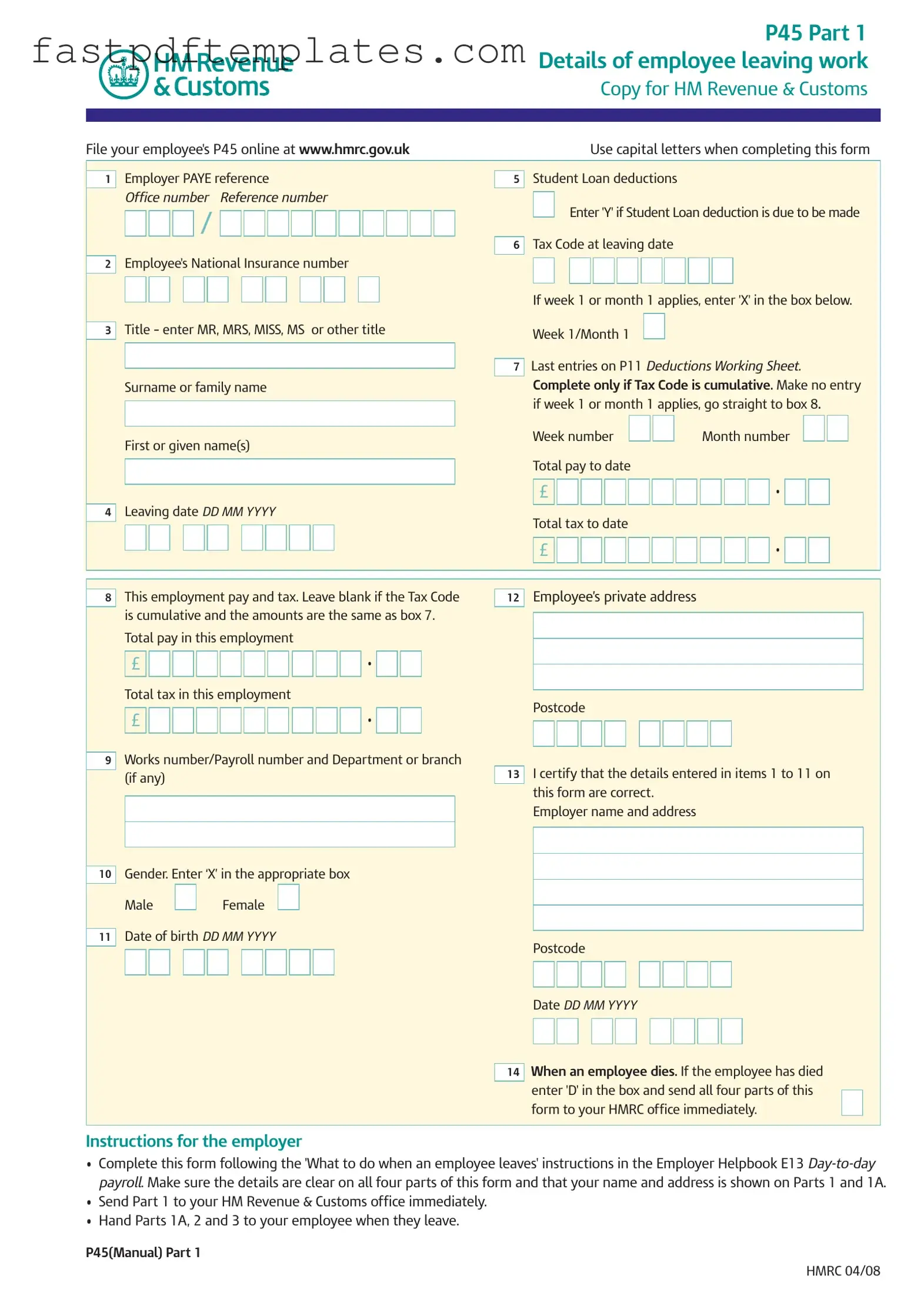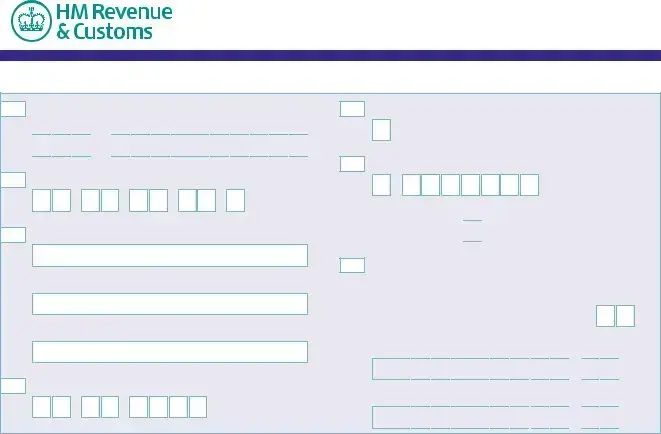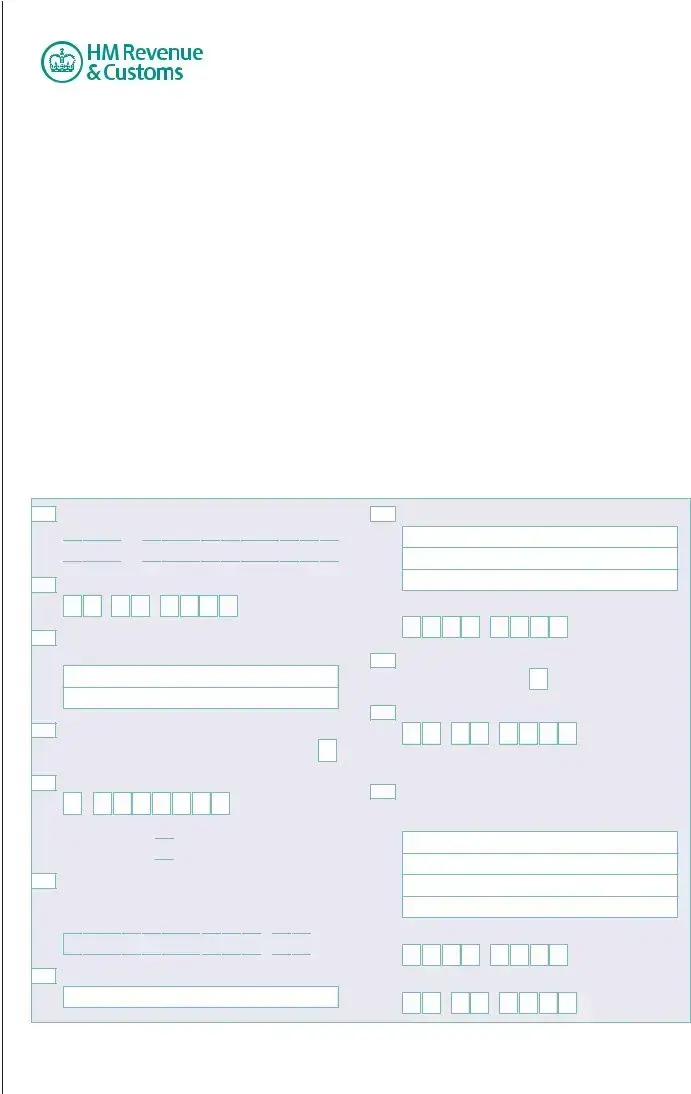The P60 form serves as a summary of an employee's total pay and deductions for a tax year. Similar to the P45, the P60 is issued by an employer but is provided at the end of the tax year rather than when an employee leaves. It includes information such as total earnings, tax paid, and National Insurance contributions, which can be useful for employees when filing their tax returns. Both forms are important for tax purposes, but the P60 is more comprehensive as it covers the entire year, while the P45 focuses on the period of employment that has just ended.
The P11D form is another document that shares similarities with the P45, particularly in its purpose of reporting earnings. However, the P11D is specifically used to report benefits and expenses provided to employees. This form is crucial for employers to declare non-cash benefits that may affect an employee's tax liability. While the P45 details earnings and tax deductions upon leaving a job, the P11D provides a broader view of an employee's total compensation package, including perks that are not reflected in regular paychecks.
The P60C form is related to the P60 and is issued when an employee has been employed for only part of the tax year. It summarizes the pay and tax details for that specific period. This form is similar to the P45 in that it is provided when employment ends or changes. Both forms serve to inform the employee and HM Revenue & Customs about earnings and tax deductions, but the P60C is focused on shorter employment periods within a tax year.
The P50 form is used to claim a tax refund when an employee stops working. Like the P45, it is relevant for individuals who have left their jobs. The P50 allows employees to reclaim any overpaid tax, while the P45 provides necessary employment details for tax purposes. Both forms play a role in ensuring that employees are taxed correctly, but the P50 specifically addresses the need for a refund, whereas the P45 documents the end of employment.
The P85 form is utilized when someone is leaving the UK to live or work abroad. This form is similar to the P45 in that it notifies HM Revenue & Customs about a change in employment status. The P85 helps determine an individual's tax residency and any tax refunds due when moving out of the country. Both forms are essential for managing tax responsibilities, but the P85 specifically addresses international moves, while the P45 pertains to domestic employment changes.
The P14 form, now replaced by the P60, was previously used to report an employee's pay and tax deductions at the end of the tax year. It is similar to the P45 in that it provided information relevant to the employee's tax situation. While the P14 was issued at the end of the tax year, the P45 is issued when employment ends. Both forms serve to inform employees and HMRC about earnings and tax contributions, but the P14 was more focused on annual totals, whereas the P45 is concerned with the specifics of employment termination.
The FPS (Full Payment Submission) is a report submitted by employers to HM Revenue & Customs each time they pay their employees. While the P45 is a one-time document issued upon leaving a job, the FPS is submitted regularly throughout the year. Both documents provide important information about an employee's earnings and tax deductions. The FPS ensures that HMRC has up-to-date information on an employee's pay, while the P45 is necessary for employees transitioning out of a job.









 /
/ 







































 •
• 





















 •
• 









 /
/ 







































 •
• 


